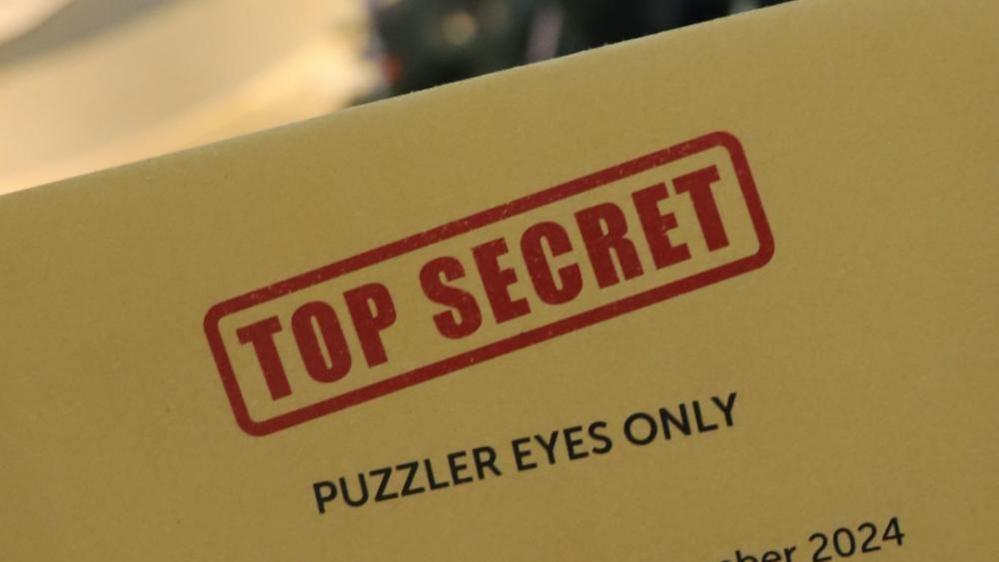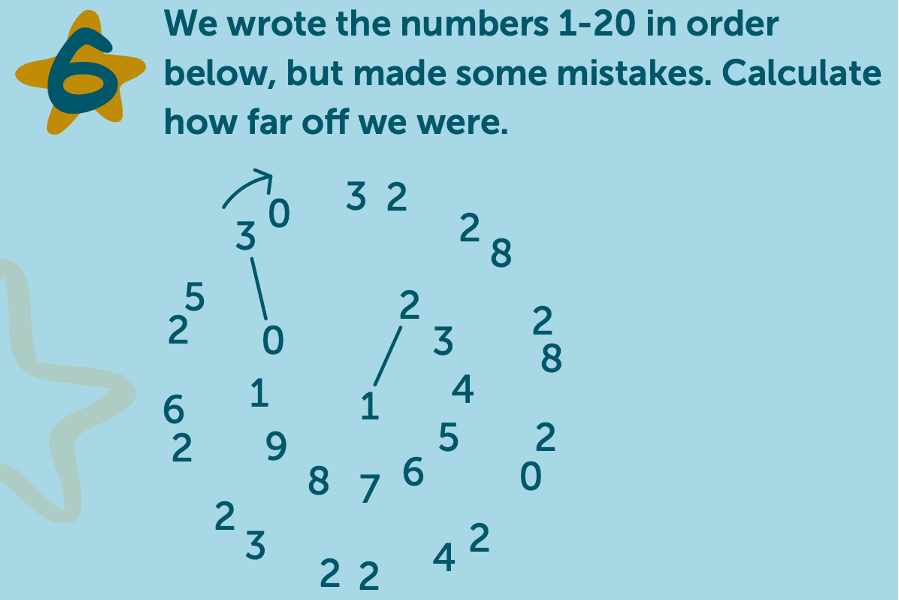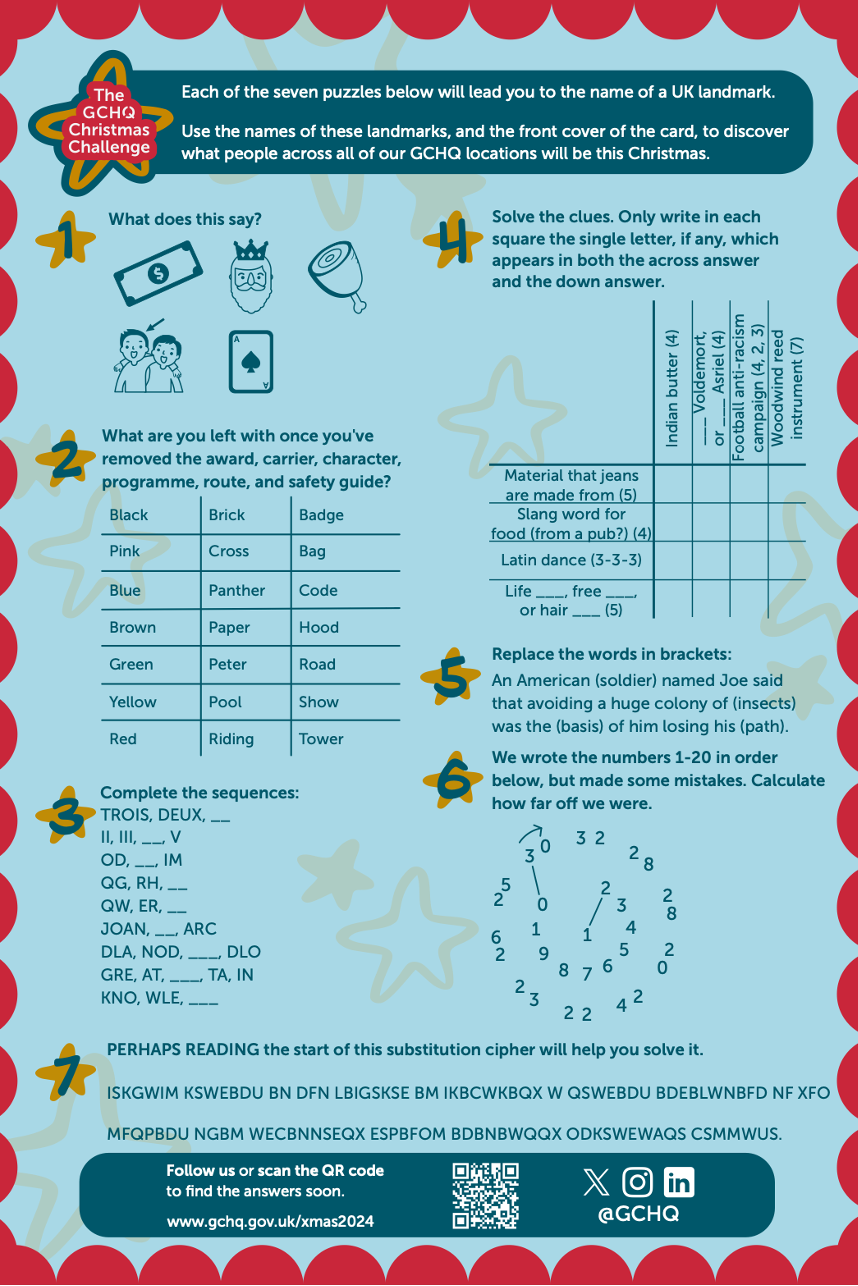Taking on the GCHQ Christmas challenge? These experts can help

- Published
Still scratching your head over the GCHQ Christmas challenge, external?
This year the public has been challenged to decode the names of UK landmarks, testing skills including codebreaking, maths and lateral thinking.
The annual brainteaser aims to tickle the neurons of those hoping to work in intelligence, and comes in the form of a Christmas card, sent by the national spy agency's director Anne Keast-Butler.
To help you solve it, we've spoken to a few puzzling experts to pick their brains on how to navigate the testing challenges.
Have a read and don't worry - we haven't given away the answers.
Can you solve the GCHQ Christmas challenge?
- Published11 December 2024
The only advice Ms Keast-Butler gave BBC Breakfast earlier on Wednesday was to work in a team and "bring a rich mix of minds".
Bobby Seagull, maths teacher, writer and devotee of the challenge, agrees with that approach.
"We all remember from our school days, different people have different skillsets," he says. "Some may think in a mathematical way, others are visual learners or more linguistic.
"It shows that lots of different skills matter."

The first - and easiest - question features five images, representing a place name.
Susan Okereke, a maths teacher who has written puzzles for BBC Radio 4, said she was initially intimidated by the challenge.
"I thought, GCHQ - no way!"
But she managed to crack the code by reading aloud.
"I was looking at it thinking, what does it sound like?
"Then I thought, it has to be a location - so that narrowed it down."
It took Dr Barry R Clarke, author of several puzzle books, about two minutes to solve the first puzzle.

But the second caused a bit more head scratching.
"My first idea here was London underground tube lines, because of the colours… but I wasn't getting anywhere."
He suggested casting an eye across the columns instead, and searching for possible connections.
One of the tougher problems asks puzzlers to calculate how far off from writing the numbers one to 20 the quiz setters were.

"It looks like it is set up for a rotation of some kind," Dr Clarke says. "You could possibly start in the middle and wind out, to get one to 10."
Mr Seagull takes a specific two-prong approach to the GCHQ challenge, which he says is the highlight of his "puzzling year".
"It may take a few hours or days, but let it incubate in your brain," he explains.
"The first step is analytical or brute force. Take the puzzle, underline key words, work out what you do and don't know."
Alan Connor, the Guardian's crossword editor and the puzzle consultant on BBC One's puzzle-based detective series Ludwig, said not to worry about feeling ignorant.
"The thing to remember is that the person setting the puzzle wants you to solve it.
"A puzzle that's presented to the general public is not going to be asking you for things that you don't know."
He added that while GCHQ staff make plenty of puzzles that do ask for niche knowledge, "they set those for each other for their own private amusement".
"The experience that they want you to have is to feel you've achieved something because you've struggled a bit," he adds.
The main challenge, he says, is to work out what the puzzle is actually asking.
He explains: "Unlike with a sudoku or a crib crossword it's not clear what the puzzle is to begin with - you don't know what it is you're decoding. First of all you have to work out what the question is and then what the answer is."
The full challenge can be viewed on GCHQ's website here., external
